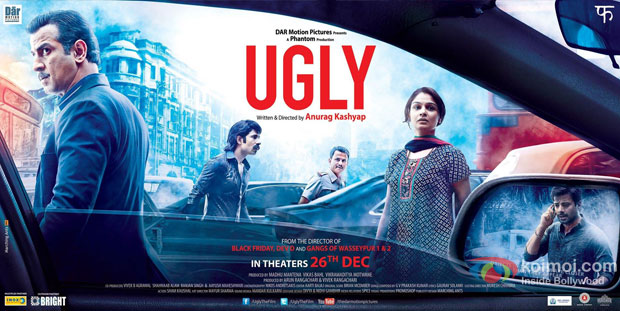3 Films to Jump-start your Indian Cinema Education: Ugly (2014)
In an earlier post, I introduced 3 Films to Jump Start Your Indian Cinema Education, a series whose name pretty much says it all. It’s a series of posts through which I list three films that one could watch to jump-start their education in Indian cinema.
Despite the enormous number of films I could pick from and the limited number of films I could choose, I’ve picked three films that together, I think, show some of the enormous breadth that Indian cinema has to offer, as well as highlight some of the common trends and themes seen within that diversity.
In a choice that likely surprised few, I started the list with Dilwale Dulhania Le Jayenge (1995), a film popularly known by its acronym, DDLJ, which has had enormous influence on the Indian blockbusters that have released since it first hit theaters in the mid-90s. Further, it contains some of the most recognizable scenes and songs in Indian film history.
But DDLJ represents only a slice, albeit a very popular slice, of Indian cinema and its diversity. Namely, the mainstream rom/com/drama slice.
And a lot of interesting work is produced outside of the mainstream, reflecting India’s strong, although less known, tradition for independent and often boundary-pushing filmmaking. Parallel and art house cinema are two of the terms used to describe this tradition. And despite the often humble box office takings of these offerings, some are among the best films produced in India.
As a testament to this important part of the Indian cinema community, I present the second film in the series, 3 Films to Jump Start Your Indian Cinema Education…
Ugly (2014)
After just the first few seconds of Anurag Kashyap’s Ugly, which follows the aftermath of a Mumbai kidnapping, you’ll know you’re in for something different, something darker.
In this way, Ugly greatly contrasts with the other two movies on my list, as well as many others in India. But importantly, Ugly is so much more than just a foil to mainstream films. It also contains some of the finest acting I’ve ever seen, anywhere, and a selection of scenes that will forever remain in my memory. Although not for the faint of heart – its puts the noir in film noir – it is well worth a watch for some of its cutting dialogues and fine acting.
(Side note: For those interested in both non-mainstream Indian cinema and Netflix, you’re in luck, because Netflix has a sizable and seemingly increasing selection of such films.)

